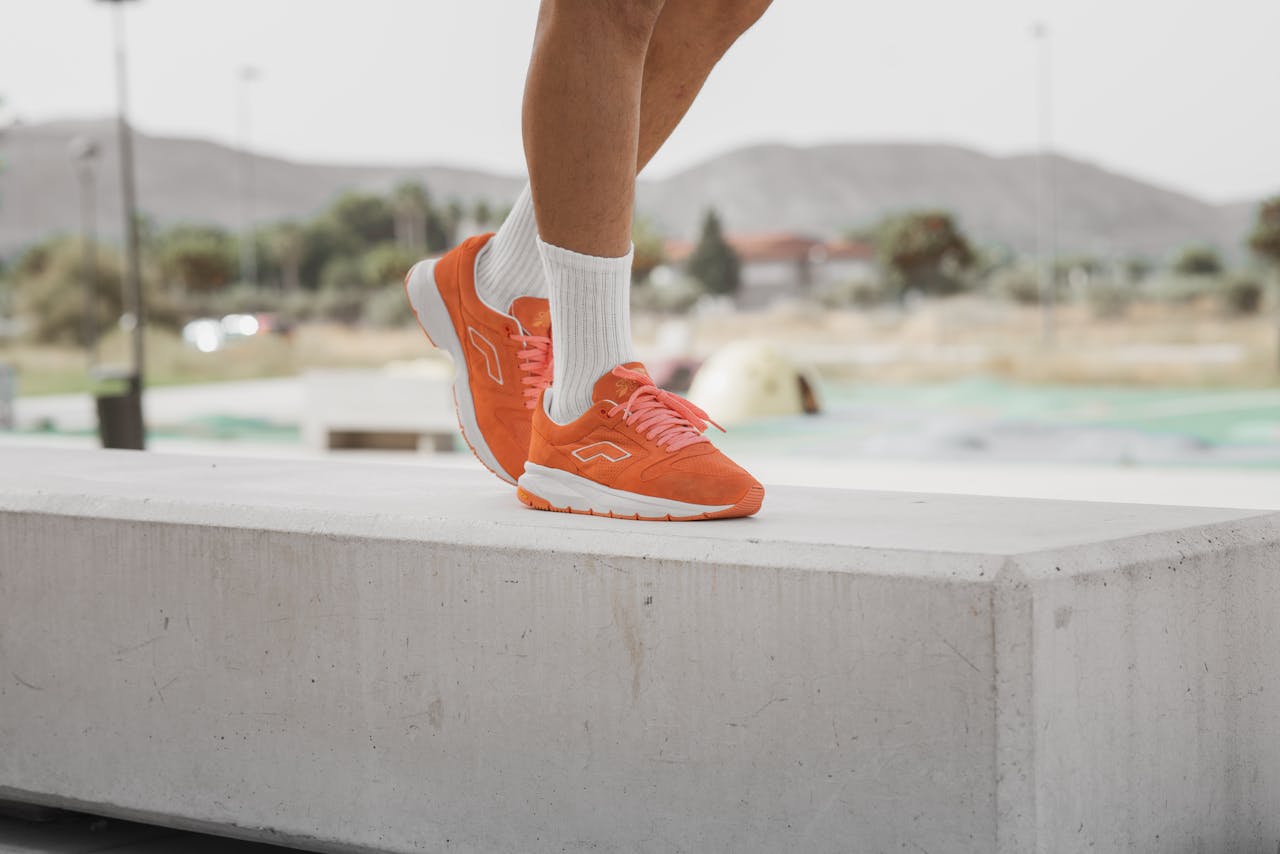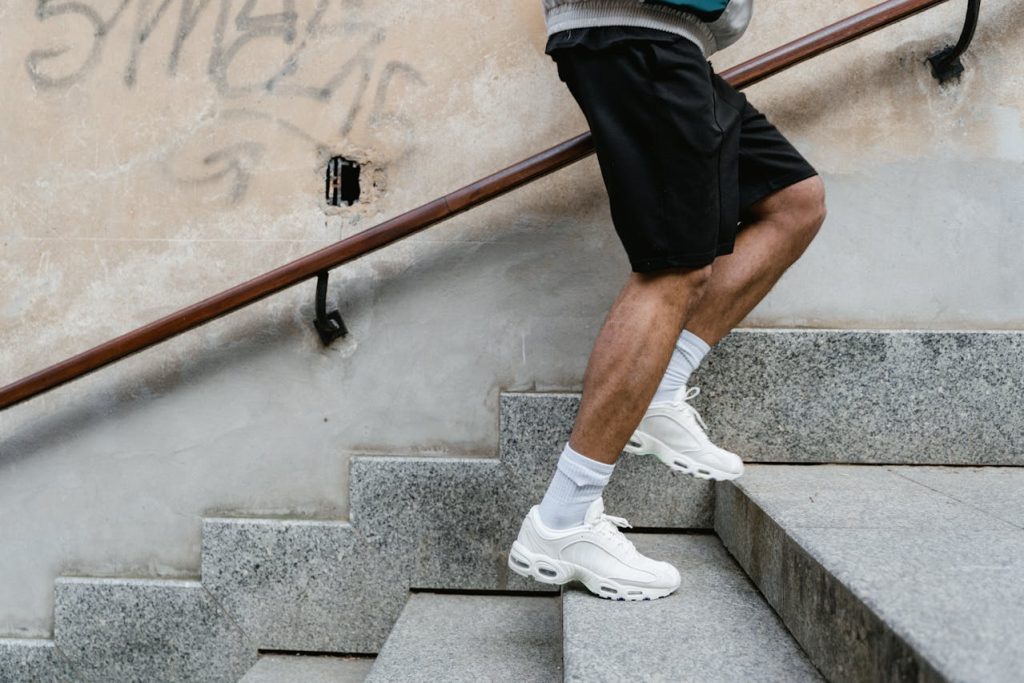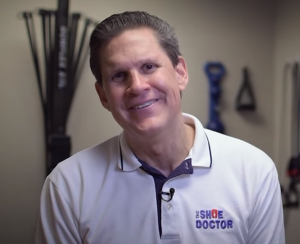Key Takeaways
- Custom orthotics deliver tailored support and biomechanical correction, particularly for chronic or complicated conditions like plantar fasciitis, whereas OTC insoles primarily provide cushioning for mild discomfort.
- The custom nature of custom orthotics means they can be engineered to combat specific foot issues, providing support, cushioning, and motion control that generic insoles may not offer.
- For those with acute or minor foot pain, off-the-shelf insoles can be an economical and practical alternative, particularly if the discomfort is not chronic or debilitating.
- Consulting a podiatrist is crucial for those experiencing ongoing or severe foot pain, as professional evaluation ensures an accurate diagnosis and the most appropriate intervention.
- Material science advancements in custom orthotics promote durability, adaptability, and foot health, providing long-term pain relief and minimizing the likelihood of future foot issues.
- As for insoles vs custom orthotics, weigh your foot issues, lifestyle, and long-term comfort requirements, and most importantly, seek expert advice.
Insoles and custom orthotics both aid plantar fasciitis by providing support and alleviating stress on the heel and arch. Insoles are off-the-shelf and in retail, typically crafted from soft foam or gel and fit most footwear. Custom orthotics are molded from a cast of the foot, so they conform to an individual’s anatomy and provide more rigid support as necessary. If you have mild pain, then insoles can potentially relieve it, but people with chronic or debilitating pain generally require custom orthotics that offer a much better fit and stability. Cost and comfort vary, with custom orthotics being more expensive but more durable. To assist you in deciding between them, the following sections will profile key characteristics, advantages, and usage tips.
Understanding the Difference: Store-Bought Insoles vs. Custom Orthotics
Insoles and custom orthotics both go inside your shoes, but they differ significantly in their purpose, level of support, and long-term benefits. Here’s a breakdown to help you understand which option might be right for your feet:
Insoles: These are mass-produced inserts available at most pharmacies, department stores, or online. They’re generally:
- Designed to fit a wide range of shoe sizes and styles, with most labeled as “one-size-fits-all” (but can be trimmed for a better fit).
- Made from foam or gel, providing soft padding and temporary shock absorption.
- Helpful for mild heel pain, sore feet, or occasional discomfort from standing or walking.
- Affordable and easy to buy without a prescription.
- Not built for longevity; they often wear out or lose shape after a few months of regular use.
- Limited in support, making them a short-term solution for minor foot issues like early-stage plantar fasciitis.
Custom Orthotics On the other end of the spectrum, custom orthotics are personalized medical devices created by a podiatrist after a full foot assessment. These include:
- A detailed exam involving foot scans, gait analysis, and pressure point evaluation.
- A custom design measured down to the millimeter to match your foot shape, arch type, and walking pattern.
- Durable materials are built to last for years without collapsing or losing their structural integrity.
- Greater control over joint motion and better alignment, which helps prevent injuries and manage chronic conditions like advanced plantar fasciitis.
- Prescription-only and tailored for individuals with complex or persistent foot problems.
- More expensive than insoles and take longer to produce, but they deliver long-term comfort, protection, and stability.
While insoles are a convenient and inexpensive way to test the waters with foot support, they fall short for those dealing with serious pain or structural foot issues. Custom orthotics, although more costly and requiring professional evaluation, offer a higher level of therapeutic benefit and long-term relief.
Feature | Insoles (Prefabricated) | Custom Orthotics |
Availability | Over-the-counter | Prescription only |
Fit | One-size-fits-all, trimmable | Tailored to the individual foot |
Cost | Low | High |
Lifespan | Months | Years |
Support Level | Basic cushioning | Advanced support and control |
Manufacturing Time | Instant | 2-4 weeks |
Assessment Needed | None | Full podiatric assessment |
Suitability | Mild symptoms | Moderate to severe, unique needs |
For mild symptoms or people who aren’t sure what works, a store-bought insole is a perfectly safe place to start. If the pain is severe or if symptoms don’t improve, visit a podiatrist. A foot specialist can help sort out which is right and make sure the device fits both the person and the problem.
How Insoles and Custom Orthotics Affect Your Biomechanics
The biomechanical difference between insoles and custom orthotics is how they support the specific anatomy and motion of the foot. Insoles provide fundamental cushioning and some arch support. Custom orthotics are designed to tackle particular biomechanical concerns such as excessive pronation, heel discomfort, or walking difficulties. Custom orthotics apply precise measurements and materials to deliver personalized support, which can be a game changer for plantar fasciitis sufferers or those with persistent pain.
1. Arch Support
Arch support is crucial for maintaining foot alignment and preventing excess inward rolling, known as overpronation, which commonly causes discomfort. Custom orthotics align with the height and shape of your arch, be it flat, normal, or high. This customized support aids in stabilizing the foot and minimizes the risk of persistent pain.
Pre-made insoles aren’t always the perfect shape for your foot. If there isn’t sufficient arch support, individuals can experience foot pain or even develop plantar fasciitis and similar issues. Athletes and individuals who spend hours on their feet get the most out of custom arch support. For instance, flat-footed runners will consider a generic insole useless for their marathon, but a custom one can prevent pain and keep them going.
2. Heel Cushioning
Heel cushioning counts only in walking or running. It’s one of the few things out there that helps absorb the shock each time your heel strikes the pavement. Specific orthotics may feature deep heel cups or additional cushioning to distribute this pressure. That’s real relief for those with heel spurs or plantar fasciitis.
Materials used in custom orthotics—such as closed-cell foam or medical-grade gel—last significantly longer than the cheap foam in generic insoles. For Achilles tendinitis sufferers, personalized heel cushioning can be the biomechanical difference between agonizing daily and simply being able to walk. Other insoles, plain and simple, break down too quickly, losing their cushion in a matter of weeks.
A strong heel cup in a custom orthotic helps alleviate this as well, by keeping the heel stable, preventing it from slipping inside the shoe, which is another pain culprit for many.
3. Motion Control
Motion control is the way an orthotic stabilizes the foot during ambulation. Custom orthotics direct the foot through a natural step, mitigating issues such as overpronation or supination. This is huge for athletes who suffer from shin splints.
Flat feet or abnormal gait tend to require such focused assistance. Normal insoles typically lack the cupping shape and stiffness required for actual motion control. For walkers and runners who pound the pavement daily, the stability difference is obvious. Custom orthotics frequently translate to less injury and pain.
4. Pressure Relief
Pressure relief is important for diabetics, who have the potential to develop foot ulcers if pressure is not distributed. Podiatrists use soft spots and special shapes in custom orthotics to offload pressure from sore spots. This enhances comfort for anybody with chronic pain, such as in metatarsalgia or plantar fasciitis.
Generic insoles simply don’t fit feet. For others, it’s that the pain never leaves.
Even minor pressure variations can help ward off hard-to-heal wounds.
5. Material Science
Custom orthotics use more durable materials that remain supportive, like carbon fiber or memory foam. They flex and flow with your foot, which keeps pain at bay and promotes healthy walking. Breathable layers aid in keeping feet dry and reduce blisters, a huge bonus for the ‘do-er.’
Moisture-wicking fabric is typical of custom orthotics, which keeps feet dry over extended days or workouts. Over time, these resilient materials maintain form, providing support for years.
When Over-the-Counter Insoles Are Enough
Insoles are sometimes all you need. Over-the-counter insoles are typically sufficient for individuals experiencing mild foot discomfort or those with early signs of plantar fasciitis. These insoles work best when the pain is mild and when you are trying to provide some basic support or cushioning through normal activity. Insoles are designed to be inserted into most shoes and require no doctor’s note or custom fitting. The primary reason individuals choose them is that they’re accessible, inexpensive, and can assist with everyday pains or stiffness. Insoles provide comfort by distributing pressure, softening impact, and placing a cushion over the sole. If their pain is mild or they simply want to test the waters to see if a support device will do the trick, insoles are a reasonable starting place.
- Light or occasional heel or arch pain, such as from standing for long hours.
- Foot pain is associated with new shoes or walking more than normal.
- Individuals without persistent or severe foot alignment issues
- Anyone who wants to test out support options before shelling out for custom orthotics.
- For those who do light or low-impact activity — think slow walking, casual gym user — the Insoles alone may suffice.
- Quick relief for those still recovering from a minor sprain.
- Individuals with low foot strain occupations or lifestyles
- When money or time is an issue, and custom devices aren’t feasible.
The cost side is important for a lot of people. Insoles are a fraction of the cost of custom orthotics. Most insoles run just a fraction of the price of a custom-made device. If you’ve got a one-off issue — pain after a backcountry trek or a new gig that requires extra standing — it makes sense to begin with an insole. These are easily interchangeable, transferable between pairs of shoes, or replaced at minimal expense. Custom orthotics, however, typically require a doctor’s exam and a fitting, which consumes more time and money. In settings where health budgets are lean, or if insurance won’t pay for custom devices, insoles are the more pragmatic option for many.
How insoles are marketed contributes to their allure. Anyone can just pick them up in stores or online, no appointment or clinic visit required. This is great for those who need immediate assistance or who don’t have convenient access to a podiatrist. For everyday activities like walking to work or shopping, however, most discover that basic insoles provide sufficient support to reduce discomfort. Because they’re sold in different varieties, wearers can select what fits their needs, such as extra padding for achy heels or additional arch support for flat feet. This convenience is a major reason why so many begin with insoles prior to considering custom equipment.
For less-active individuals like desk jockeys and short-distance pedestrians, the demand for technical support declines. Most foot pain in these instances connects to transient strain or poor footwear, not ingrained issues. In these environments, insoles tend to solve the issue by making shoes more comfortable and distributing weight more effectively. If pain doesn’t persist or improves with insoles, this indicates a mild condition that does not require a larger intervention.

The Advantages of Custom Orthotics
What makes custom orthotics so exceptional is the personal attention. Unlike insoles, which employ a one-size-fits-all approach, custom orthotics are constructed from a mold of your foot. That is, they fit only you, molding to your arch, heel, and even your gait. For plantar fasciitis, this counts. The pain is from tension and stress where the tissue attaches to the heel. Why custom orthotics work best. Custom orthotics provide support exactly where you need it. They assist in distributing pressure, elevating the arch, and aligning your foot with your ankle and knee. You get pain relief and improved foot dynamics. Studies support this. One systematic review concluded that custom orthotics can provide significant pain relief and improve function, particularly in the initial months of orthotic use. That same review went on to say that these benefits aren’t just exclusive to plantar fasciitis but apply to heel pain and ankle sprains. This is why custom orthotics rock for folks with a plethora of foot issues.
Getting custom orthotics begins with a complete evaluation from a podiatrist. This is the secret step. The doc considers your foot shape, gait, activity level, and even pain elsewhere, like knees or hips. They may utilize pressure maps or motion tests. This in-depth analysis ensures the orthotic isn’t merely a cushion — it’s an element of your therapy. Your doctor can mold the orthotic to support your foot and movement. This is very different from simply purchasing an insole at a store that can’t consider your complete health.
Runners, athletes, and those who are on their feet all day love how Custom orthotics help. Due to the proximity of the fit to your foot, you experience support that moves with you. For an athlete, this means it can help keep your stride smooth, reduce your chance of injury, and prevent pain from returning. In another study, custom orthotics beat chiropractic care for pain at eight weeks, demonstrating how they serve people who need to stay on their feet.
Down the road, the worth of custom orthotics is obvious. They’re not simply for mitigating pain now; they can assist those with chronic foot issues for years to come. The main benefits include:
- Support for your gait, which can keep the pain from returning.
- Relief of various types of foot and ankle issues, not only plantar fasciitis.
- Less demand for more expensive treatments, such as surgery or chronic medication.
- Can be paired with other therapies, such as night splints, to increase effectiveness.
- Research demonstrates relief for a year or longer.
The Hidden Costs of Insoles vs. Custom Orthotics
The price tag isn’t the full story when comparing over-the-counter (OTC) insoles to custom orthotics for plantar fasciitis. Long-term value, durability, insurance, and effectiveness matter more than just the upfront cost. Here’s what you really need to know:
- Custom orthotics generally cost between $200 and $800 per pair, depending on the provider and region. This typically includes evaluation, fitting, and follow-up appointments—but not always. Check your provider’s pricing breakdown.
- Follow-up costs may arise if the orthotics need adjustments or replacements due to poor fit or wear and tear.
- Repairing or refurbishing worn orthotics (e.g., resurfacing) typically costs around $50–$100, and may be needed before the typical 2–5 year lifespan ends.
- While materials and production may cost under $100, the rest of the price covers your specialist’s time, expertise, and aftercare support.
- Many insurance plans offer partial coverage, typically 10% to 50%, or even full reimbursement with a doctor’s prescription. Always check your plan’s policy, as coverage varies by country, state, and insurer.
- High-end OTC insoles, such as those sold by specialty retailers like Good Feet, can cost $400–$1,000 per set—often as much or more than custom orthotics—and are not usually covered by insurance.
- Most basic OTC insoles wear out in 6–12 months, requiring frequent replacement, especially if you use them in multiple pairs of shoes.
- Over time, custom orthotics may reduce the need for medical treatments, like physical therapy, medication, or surgery. Proper foot support can lead to faster healing and fewer days missed from work or activity.
- While custom orthotics have a higher upfront cost, they often last longer and can be more cost-effective over 3–5 years compared to frequently replacing OTC insoles.
- Beyond money, custom orthotics improve foot alignment and comfort, helping to reduce pain and prevent injury. For active individuals and people on their feet all day, this can significantly improve quality of life.
Choosing What’s Right for You
Whether to go with insoles or custom orthotics for plantar fasciitis isn’t black and white. They each fulfill different requirements, and the best choice frequently varies based on your foot shape, pain intensity, and lifestyle. Insoles are convenient, inexpensive, and can provide relief if you’re suffering from mild heel pain or just beginning to experience aches. They go in most shoes, and you can experiment with different brands and styles to find out what feels best. For most, this is the initial step prior to considering more customized answers.
For those with persistent pain or unique issues such as bone spurs or tight Achilles tendons, custom orthotics could be the way to go. These come after clearance by an expert podiatrist. The podiatrist will examine your gait, foot profile, and pressure flow. Made from durable materials, custom orthotics can last for years. They’re designed to relieve stress on painful areas and direct your foot to function in a natural manner. This can assist in not only plantar fasciitis but also other injuries. Remember, custom orthotics don’t come fast. A month or so passes from your first visit to when you begin to use them. The price can be steep—some pairs go for €185 or above. This implies for others that the expense and delay might not pan out, especially if pain already bears down.
Before making a choice, it is smart to check your comfort, support, and pain relief needs. Use this checklist:
- Comfort: Try standing and walking with the insole or orthotic. Pay attention if they create any sore spots, pinching, or rubbing. Your feet should feel cradled, not squeezed.
- Support: Check if your arches feel lifted and your heel is stable. A proper fit implies that your foot doesn’t slide circa and your pain doesn’t escalate.
- Pain Relief: Wear the insert for a full day. Observe whether your heel pain diminishes, remains the same, or exacerbates. If you still ache, then it’s time to seek the custom option.
Consult a podiatrist before investing in pricey merchandise. A specialist can identify foot issues you might not detect yourself, and assist you in deciding whether custom orthotics truly offer an advantage over off-the-shelf insoles. While research discovers that both can work well, bespoke orthotics can assist stubborn cases and could potentially prevent new foot injuries from emerging.
It’s all about long-term thinking about your feet. Selecting proper support is not simply about halting pain now. It’s about keeping you in the game and injury-free moving forward.
Conclusion
Plantar fasciitis can drag your days down. Over-the-counter insoles provide immediate relief and operate in light cases. Custom orthotics conform to your foot, support fill in weak areas, and steer your stride. These assist if pain lingers or returns. For most of you, it’s going to come down to cost, fit, and how quickly you want to feel better. Some have quick victories with basic insoles. Others, with severe pain, receive serious assistance from custom equipment. They both have a place. Your feet will let you know what’s going to work best. For stubborn pain or weird foot shapes, consult a podiatrist.
Frequently Asked Questions
1. What is the main difference between insoles and custom orthotics for plantar fasciitis?
Insoles are ready-made and provide generic support. Custom orthotics, built specifically to your feet and the areas that need relief from plantar fasciitis.
2. Can over-the-counter insoles help with plantar fasciitis pain?
Sure, insoles from the drug store can help. They assist in cushioning the heel and support the arch, but may not treat the root cause.
3. Are custom orthotics worth the higher price?
Custom orthotics are designed specifically for your foot. They provide long-term advantages, particularly for serious or chronic plantar fasciitis. The investment might save you pain down the road.
4. How do I know if I need custom orthotics?
If you have relentless pain despite wearing insoles or your plantar fasciitis interferes with daily activities, a healthcare provider may prescribe custom orthotics after a thorough examination.
5. Can insoles prevent plantar fasciitis from returning?
Insoles can help support your feet and minimize stress on the plantar fascia. They’re not as good as stopping it from coming back if you have underlying biomechanical issues.
6. Are custom orthotics covered by insurance?
Certain health plans will cover custom orthotics if prescribed by a physician. Review your policy specifics and call your provider for confirmation.
7. How long do insoles and custom orthotics last?
Insoles typically wear out after 6–12 months, depending on usage. Custom orthotics can last a couple of years with the right care, a longer-lasting solution.
Struggling With Plantar Fasciitis? Find Real Relief With Custom Orthotics From The Shoe Doctor
If you’re dealing with sharp heel pain or stiffness when you take your first steps in the morning, you may be suffering from plantar fasciitis—a common condition caused by strain on the ligament that supports your arch. At The Shoe Doctor, our custom orthotics are designed to reduce that strain, relieve pressure, and help you walk comfortably again.
With over 20 years of experience, Russell uses advanced 3D foot-mapping technology to create orthotics tailored to your exact foot shape and movement. These orthotics don’t just cushion your heel—they correct alignment, support your arch, and help prevent the condition from coming back. Through our partnership with the Spine & Injury Medical Center in San Jose, we also ensure your whole body mechanics are taken into account for lasting relief.
If you’re in the South Bay Area, schedule your free consultation today. Let The Shoe Doctor help you walk pain-free and reclaim your day—starting from the ground up.
Disclaimer
The materials available on this website are for informational and entertainment purposes only and are not intended to provide medical advice. You should contact your doctor for advice concerning any particular issue or problem. You should not act or refrain from acting based on any content included in this site without seeking medical or other professional advice. The information presented on this website may not reflect the most current medical developments. No action should be taken in reliance on the information contained on this website, and we disclaim all liability for actions taken or not taken based on any or all of the contents of this site to the fullest extent permitted by law.


